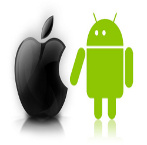- Who is Muhammad (PBUH
- The Prophet's Biography
- A Message to who does not believe in Prophet Muhammad
- The Prophet's Appearance
- Predictions about the Last Sent Prophet
- The Prophet and us
- Refuting Misconceptions
- Refuting Misconceptions
- Correcting Misunderstandings
- Refuting the Lies of the Enemies of Islam
- Refuting Suspicions-By Sheikh Hussam Sabri
- Thesaurus of the Defamations of the West against Islam- By Anwar Zanaty
- Hijab (head cover) and the Clothes of the Muslim Woman
- Why did Prophet Muhammad Marry Aisha; the Young Girl
- Fair Orientalists' Statements
- The Prophet's Worship
- The Prophet's Hadiths
- The Site's Issues
- Kids Corner
- Miracles Encyclopedia in Quran and Sunna
- Useful Books
- Useful Books
- The Prophet’s Methods for Correcting People’s Mistakes
- The Civilized Principles in the Prophet's Biography
- The Promised Prophet of the Bible
- Muhammad, the Messenger of Allah
- The Life of Muhammad-by M. Husayn Haykal
- The Amazing Quran
- The Muslim's Fastness from Quran & Sunnah-By Saeed bin Ali
- Forty Encounters with the Beloved Prophet PBUH
- The Status of Women in Islam
- The Prophet of Mercy
- Prophet Muhammad
- Muhammad Presents his Brother Jesus to Mankind
- The Etiquettes of Marriage And Wedding
- This is Muhammad
- Muhammad: Man and Prophet
- The Choice-By Ahmed Deedat
- 24 Hours in a life of a Muslim
- Series of Prophecies in the Bible for the Advent of Muhammad (Peace be upon him)
- Islam and Woman Slavery
- The Prophet's Prayer
- Virtues of Salah
- Q & A
- New Muslim Kit
- The Prophet as a Husband
| Under category | Who Wrote The Quran? | |||
| Creation date | 2010-09-06 03:19:19 | |||
|
Article translated to
|
Deutsch Español | |||
| Hits | 4954 | |||
|
Send to a friend
|
Deutsch Español | |||
|
|
|
|
Share Compaign |
|
could a human being have known these things?
although the qur’an is a book of guidance for all of mankind and not a science book , one of the great miracles of the qur’an is its conformity with modern science. it is a sign of its miraculous nature that it mentions things that no human being could have possibly known one thousand four hundred (1,400) years ago! we will give just a few examples here with commentary from some modern scientists who have read the qur’an and compared it with science.
…he creates you in the wombs of your mothers, from one stage to another, and all along three veils of darkness surrounded you [qur’an 39:6]
dr. keith moore, one of the world’s prominent scientists of anatomy and embryology at the university of toronto said:
"the realization that the embryo develops in stages in the uterus was not proposed until the 1940's, and the stages used nowadays were not adopted worldwide until the 15th century c.e."
the qur’an also says:
from what thing did he create him? from nutfa (male and female semen drops) he created him, and then set him in due proportion. [qur’an 80:18]
commenting on this verse, dr. moore said:
"the idea that development results from a genetic plan contained in the chromosomes, of the zygote was not discovered until the end of the 19th century c.e. the verse from the qur'an (80:18) clearly implies that the nutfa (i.e. the initial drop of fluid) contains the plan or blueprint for the future characteristics and features of the developing human being".
then we made the nutfa into a clot (a piece of thick coagulated blood), then we made the clot into a little lump of flesh, then we made out of that little lump of flesh bones, then we clothed the bones with flesh, and then we brought it forth as another creation. so blessed be al-lah, the best of creators. [qur’an 23:14]
the best way to really appreciate the beauty of the verses above is to see pictures of the human embryo as it goes through the various stages of development. the reference to “…chewed lump of flesh” is remarkably similar to the appearance of the embryo after the first month.
consider this in light of the fact tha t if one reads what embryologists said on the subject just one hundred years ago, one would laugh at its inaccuracies.
some of the other facts given in the qur’an include the formation of milk (16:66), the orbiting of planets (21:33 and 36:40) and the description of the water cycle (15:22 and 35:9)
maurice bucaille writes on this topic:
“the above observation makes the hypothesis advanced by those who see muhammad as the author of the qur'an untenable. how could a man, from being illiterate, become the most important author, in terms of literary merits, in the whole of arabic literature? how could he then pronounce truths of a scientific nature that no other human being could possibly have developed at that time, and all this without once making the slightest error in his pronouncement on the subject?”
- maurice bucaille, the bible, the qur'an and science, 1978, p 125.
professor alfred kroner who is one of the world’s most famous geologists said:
"thinking about many of these questions and thinking where muhammad came from, he was after all a bedouin. i think it is almost impossible that he could have known about things like the common origin of the universe, because scientists have only found out within the last few years with very complicated and advanced technological methods that this is the case
we ask the sincere reader to ponder on these facts...
Previous article Next article
أضف تعليق



















